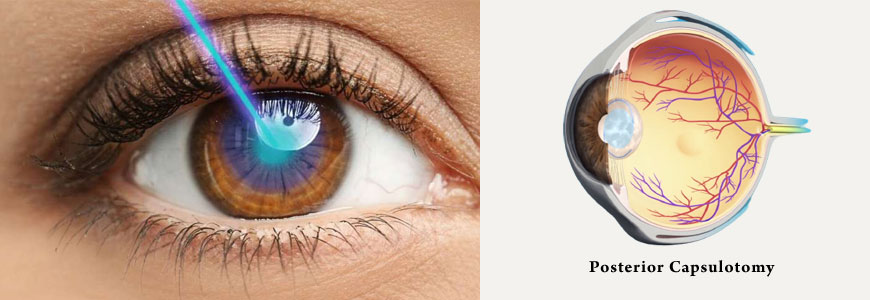Posterior Capsulotomy

What is posterior capsule ?
The normal lens inside the eye focuses light rays. This lens has a cellophane like outer lining called the cortex and the nucleus. Normally the lens is clear. When it becomes cloudy and interferes with vision it is called a cataract and the treatment is to remove it surgically. There are several ways to perform cataract surgery. The most frequent modern method is to remove the cataract leaving the back posterior part of the capsule intact. This surgery is known as extra - capsular cataract surgery or Phacoemulsification. This posterior capsule maintains the normal barrier between the two inside compartments of the eye. This back part of the capsule is used to support intraocular lens implant which is usually placed in the eye at the time of surgery to replace the eye's natural lens.
Why is a posterior capsulotomy necessary ?
The posterior capsule is normally clear, however with passage of time this capsule can itself become cloudy or wrinkled especially in younger people. These changes can interfere with vision in ways similar to the original cataract. Whenever vision is impaired because of cloudy capsule, capsulotomy is recommended to improve the vision.
How is capsulotomy done ?
When the back part of the capsule is thickened or wrinkled an opening in the centre is made to allow the clear passage of light rays (It is not necessary to remove the entire capsule). This is done with YAG laser. YAG laser is the preferred modality because it is a non - surgical outpatient procedure and does not need any anaesthetic injections. Treatment is done under topical anaesthesia in sitting position using a small contact lens which helps in focusing the beam precisely on the posterior capsule. Entire procedure lasts for few minutes and it is painless.
Can the vision be restored ?
Following the treatment there will be blurred vision for a few hours and then vision will improve.
What are the risks associated with this procedure ?
Blurred Vision, Which is Transient.
Temporary Intraocular Pressure rise may occur which is easily controlled by Drops or Tablets.
Temporary inflammation may occur which is also easily controlled medically.
Possible Cystoid Macular Edema or Detachment of retina can happen. These risks are fortunately very small and can be treated.